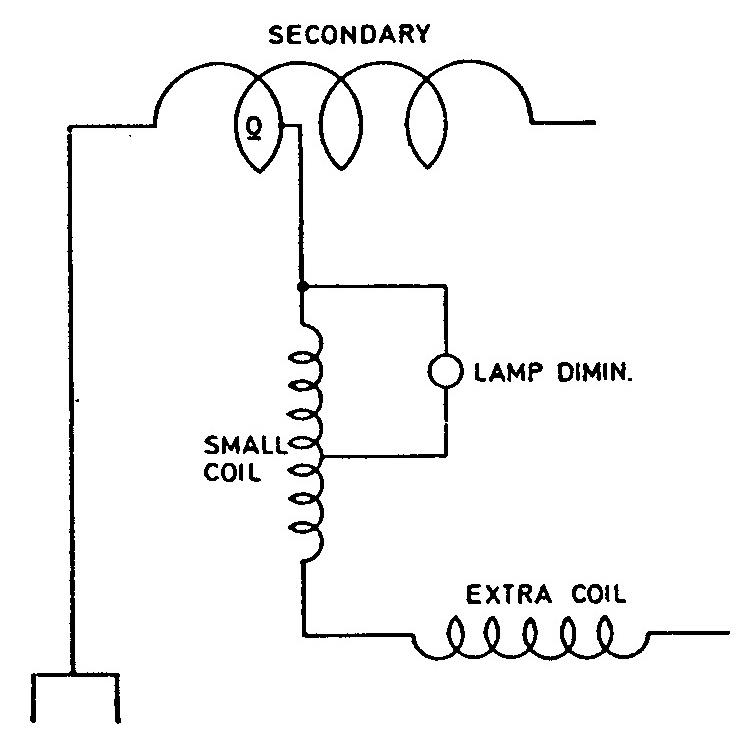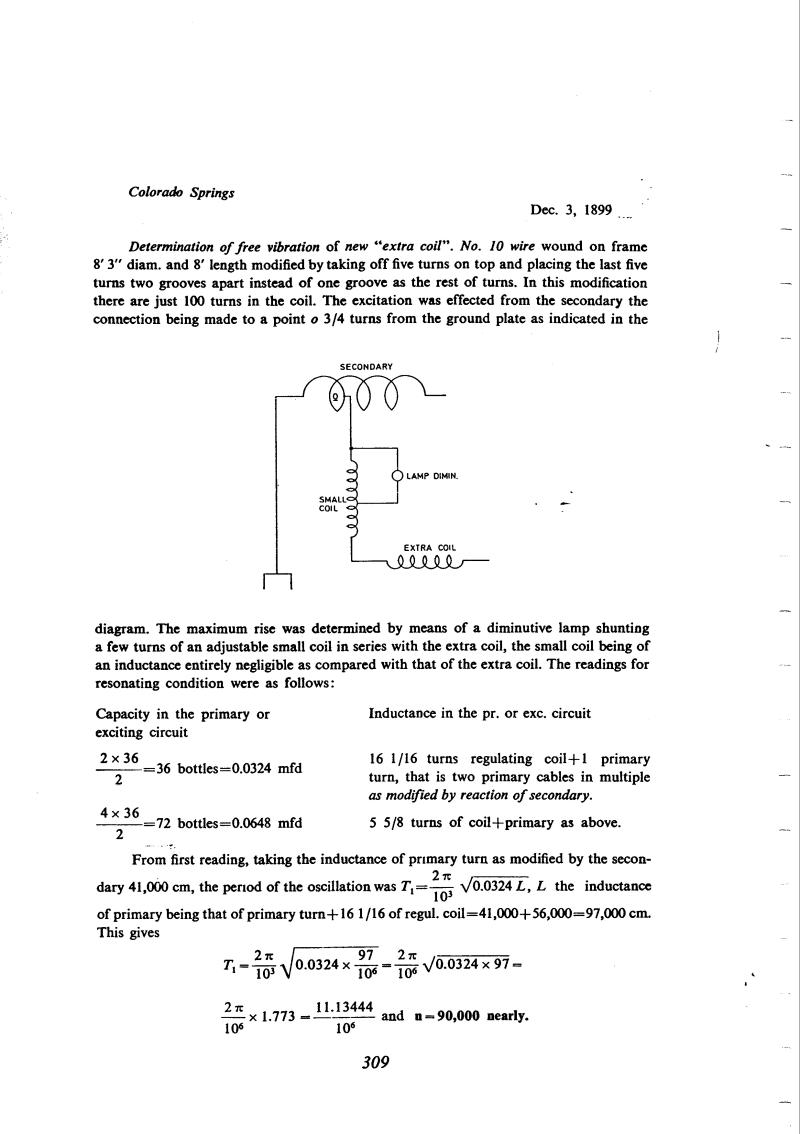
Nikola Tesla Books
Colorado Springs
Dec. 3, 1899
Determination of free vibration of new âextra coilâ. No. 10 wire wound on frame 8' 3" diam. and 8' length modified by taking off five turns on top and placing the last five turns two grooves apart instead of one groove as the rest of turns. In this modification there are just 100 turns in the coil. The excitation was effected from the secondary the connection being made to a point o 3/4 turns from the ground plate as indicated in the diagram.
The maximum rise was determined by means of a diminutive lamp shunting a few turns of an adjustable small coil in series with the extra coil, the small coil being of an inductance entirely negligible as compared with that of the extra coil. The readings for resonating condition were as follows:
| Capacity in the primary or exciting circuit | Inductance in the pr. or exc. circuit |
| $! {{2 \times 36} \over 2} $! = 36 bottles = 0.0324 mfd | 16 1/16 turns regulating coit + 1 primary turn, that is two primary cables in multiple as modified by reaction of secondary. |
| $! {{4 \times 36} \over 2} $! = 72 bottles = 0.0648 mfd | 5 5/8 turns of coil + primary as above. |
From first reading, taking the inductance of primary turn as modified by the secondary 41,000 cm, the period of the oscillation was T1 = $! {{2 \pi \over 10^{3}} \sqrt{0.0324 \times 97}} $!, L the inductance of primary being that of primary turn + 16 1/16 of regul. coil = 41,000 + 56,000 = 97,000 cm. This gives
T1 = $! {{2 \pi \over 10^{3}} \sqrt{0.0324 \times {97 \over 10^{6}}}} $! = $! {{2 \pi \over 10^{6}} \sqrt{0.0324 \times 97}} $! =
$! {2 \pi \over 10^{6}} $! x 1.773 = $! {11.13444 \over 10^{6}} $! and n = 90,000 nearly.
309
December 3-4
He returns to experiment with the oscillator and "additional coil". The resonant frequency he calculates as above earlier by a simplified procedure. In the measurement performed on December 4 he excluded the "additional coil". He measured the frequency by means of the resonant coil (i.e., coil which becomes resonant with its distributed capacitance). By means of interchange methods he determines "reduced" primary inductance.


